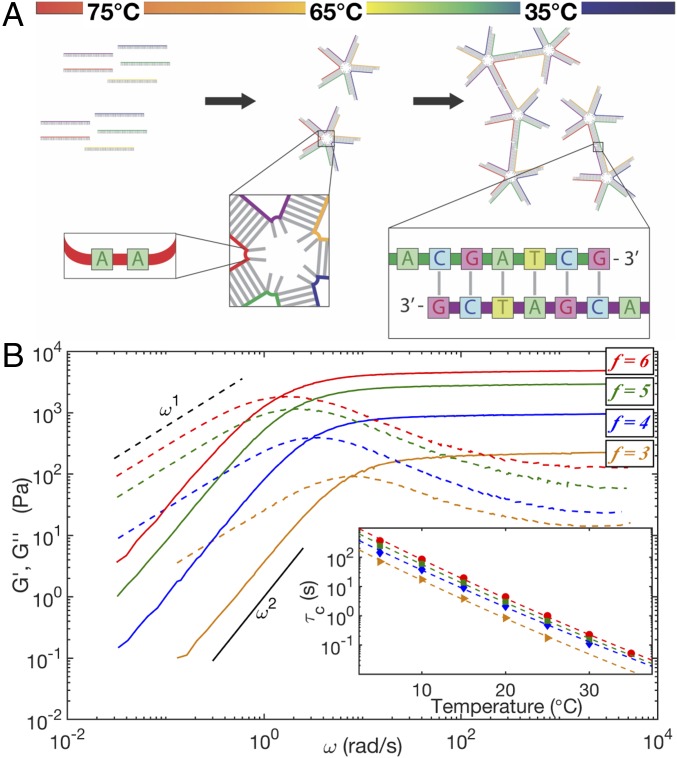Fig. 1.
(A) A 2D cartoon depicting the formation of a five-arm DNAns network as a function of temperature. Every DNAns has unpaired adenines at the base of each arm to enhance vertex flexibility. Each arm is a 21-bp double helix -nm long that ends in a single-stranded overhang consisting of an unpaired adenine and a 6-nt palindromic sequence, called the sticky end (box on the right). (B) Frequency-dependent mechanical response of DNAns networks at and Tref = 20°C. The storage modulus (solid lines) and the loss modulus G″ (dashed lines) cross at a frequency, , that is the inverse of the relaxation time, . (Inset) Arrhenius fits to have a common slope corresponding to the activation energy for network rearrangement. Orange triangles, blue diamonds, green squares, and red circles correspond to and 6 at DNAns concentrations of , (490 10), (490 20), and M, respectively.

